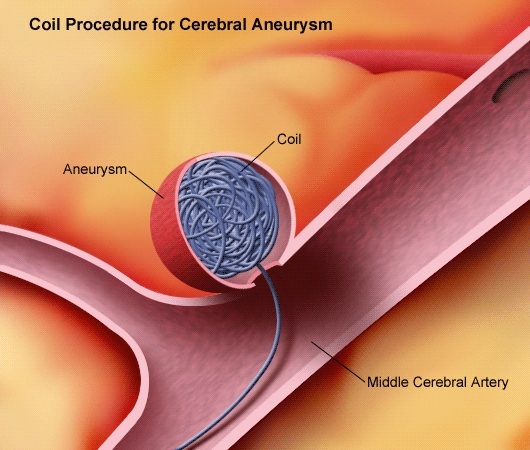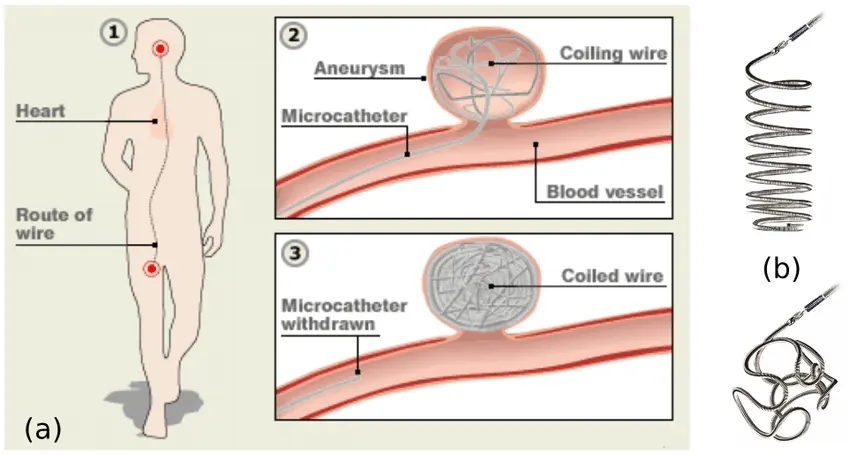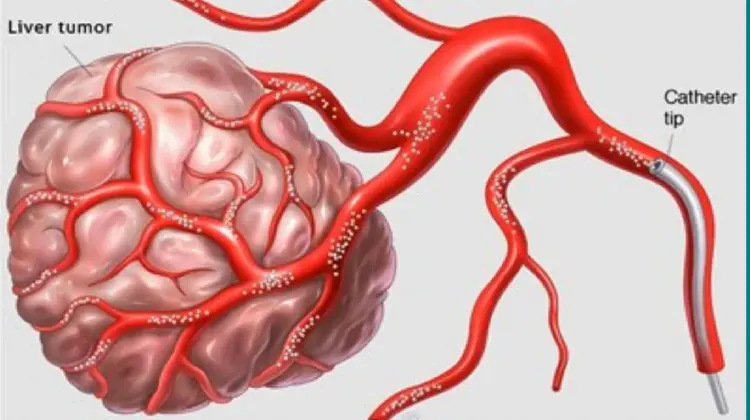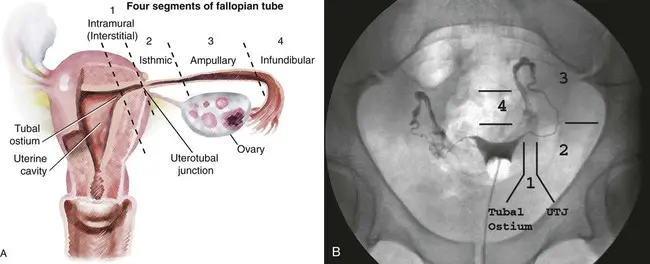Embolization is a minimally invasive procedure used to treat aneurysms by filling them with material that closes off the sac and reduces the risk of bleeding. It is performed from “within” the artery (endovascular) through a steerable catheter inserted into the bloodstream and guided to the brain.
Embolization of brain aneurysms and arteriovenous malformations (AVM) uses imaging guidance to place small, soft metal coils into an aneurysm to block the flow of blood and prevent the aneurysm from rupturing. It also is used to fill AVMs – abnormal connections between arteries and veins – with liquid embolic agents (similar to fast-sealing glue).

Embolization of Intracranial Aneurysm
Embolization of intracranial aneurysms is a minimally invasive medical procedure aimed at treating abnormal bulges or weak areas in blood vessels within the brain. This technique involves the insertion of tiny coils or devices into the aneurysm to block blood flow, thereby preventing the risk of rupture. Below, we provide a detailed overview of this procedure, including its definition, indications, procedure, and potential benefits and risks.
2. Indications:
- Intracranial Aneurysms
- High-Risk Aneurysms
3. Procedure:
- Angiography
- Endovascular Embolization
- Follow-up Imaging
4. Benefits:
- Minimally Invasive
- Rupture Prevention:
- Preservation of Brain Function




